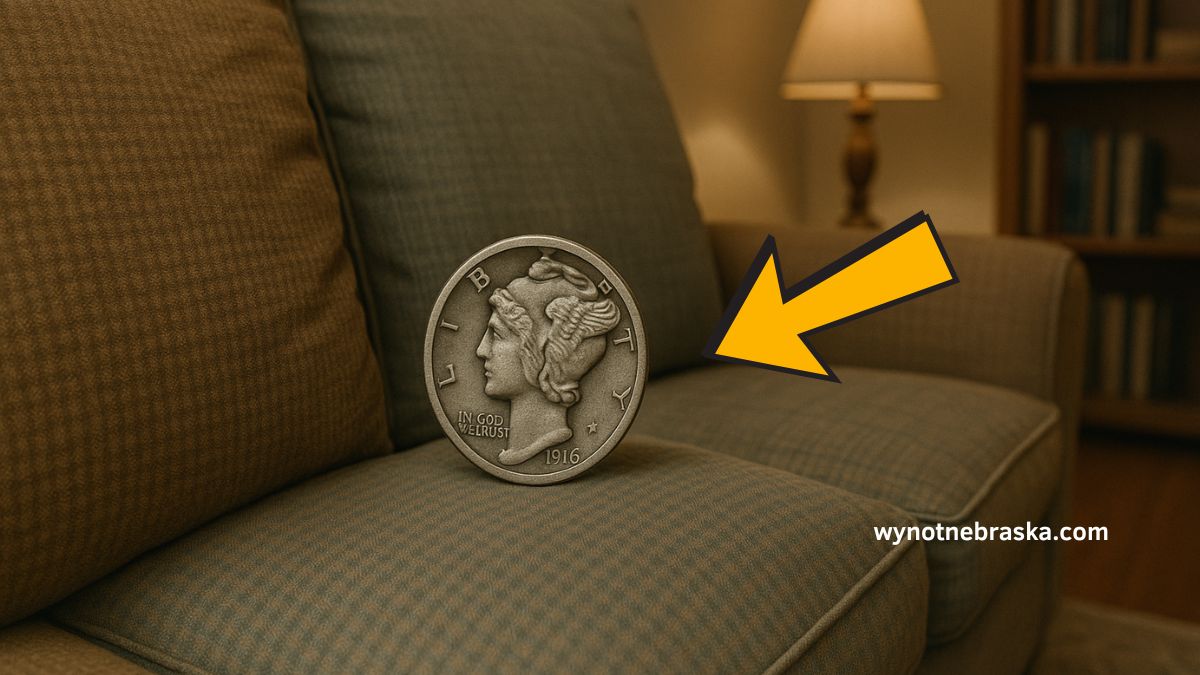In an astonishing twist of fate, a rare 1916-D Mercury Dime was discovered lodged between couch cushions, yielding an eye-popping $112,000 windfall for an unsuspecting coin enthusiast.
What started as routine cleaning turned into a life-changing discovery, reminding everyone that true treasures can lie in the most mundane places.
What Makes the 1916-D Mercury Dime So Valuable?
The 1916-D Mercury Dime is among the most sought-after coins in U.S. numismatic history. With a mintage of only 264,000, this Denver-minted dime was the lowest production of the Mercury series.
That low number instantly makes it rare, but several additional factors push its value into the six-figure territory.
Key Features of the 1916-D Mercury Dime
- Obverse Design: Lady Liberty wearing a winged cap (symbol of freedom of thought)
- Reverse Design: Fasces (symbol of unity and strength) with an olive branch (peace)
- Mint Location: Denver (indicated by the “D” on the reverse)
- Designer: Adolph A. Weinman
The Accidental Discovery
The dime’s incredible story began when a collector was cleaning out a sofa that had belonged to their late grandfather. Deep within the creases of the old furniture, a small silver coin emerged.
Initially tarnished and overlooked, the coin was cleaned gently and inspected under better lighting—revealing the iconic 1916 date and small “D” mintmark on the reverse.
Realizing the potential, the coin was taken for professional evaluation. The results were staggering: the dime was graded MS65 (Mint State), indicating it was in exceptional condition, especially for a coin over a century old. With such a high grade and rare origin, the coin was quickly valued at $112,000.
Factors That Determine the Value of a 1916-D Mercury Dime
Several important factors influence the worth of this specific coin:
1. Mintage and Rarity
With just 264,000 coins ever produced, its scarcity drives demand and price.
2. Mint Mark Location
The “D” mintmark, located on the reverse near the bottom left of the fasces, distinguishes it from the far more common Philadelphia and San Francisco versions.
3. Condition/Grade
Coins in Mint State (MS60 and above) fetch significantly higher prices. In this case, an MS65 grade elevated its market value drastically.
4. Full Bands Detail
Coins with well-defined horizontal bands on the fasces—referred to as “Full Bands”—are especially desirable.
1916-D Mercury Dime by Condition
| Grade | Estimated Value (USD) |
|---|---|
| Good (G-4) | $1,200 |
| Very Good (VG-8) | $2,000 |
| Fine (F-12) | $3,500 |
| Very Fine (VF-20) | $4,800 |
| Extremely Fine (EF-40) | $7,200 |
| About Uncirculated (AU-50) | $10,500 |
| Mint State (MS-60) | $13,000 |
| Mint State (MS-65) | $30,000–$60,000 |
| MS-66 or higher | $70,000 – $150,000+ |
Note: Prices vary depending on market trends and demand.
Avoiding Counterfeit Pitfalls
Because of its rarity and high value, the 1916-D Mercury Dime is often counterfeited. Unscrupulous sellers may attempt to:
- Alter a 1916 Philadelphia or San Francisco dime by adding a fake “D”
- Modify the date on similar-looking coins
- Sell replicas as authentic pieces
Tips to Ensure Authenticity
- Never clean the coin—it reduces value and may damage surfaces
- Use professional grading services to verify condition and authenticity
- Examine the mint mark under magnification—the placement, size, and style should match known originals
The Growing Value of Rare Coins
The coin market has seen a steady rise in interest and pricing for rare, vintage coins. Collectors are willing to pay top dollar for authenticated specimens in high grades. The 1916-D Mercury Dime stands out as one of the cornerstone coins in any collection.
The thrilling discovery of a 1916-D Mercury Dime tucked away in an old couch proves that hidden gems are not just a myth. For the lucky collector, it meant a $112,000 payday and a place in the rare coin spotlight.
For the rest of us, it’s a reminder to check our change, search our drawers, and maybe dig a little deeper into family heirlooms.
FAQs
How can I identify a 1916-D Mercury Dime?
Look for the date “1916” on the obverse and the small “D” mintmark on the reverse, located near the bottom left of the fasces.
Why is the 1916-D Mercury Dime so rare?
Only 264,000 were minted at the Denver Mint, making it the lowest mintage of the Mercury Dime series and highly collectible.
What should I do if I find an old coin that may be valuable?
Do not clean it. Instead, consult a certified coin grading expert or numismatist for evaluation and authentication.
